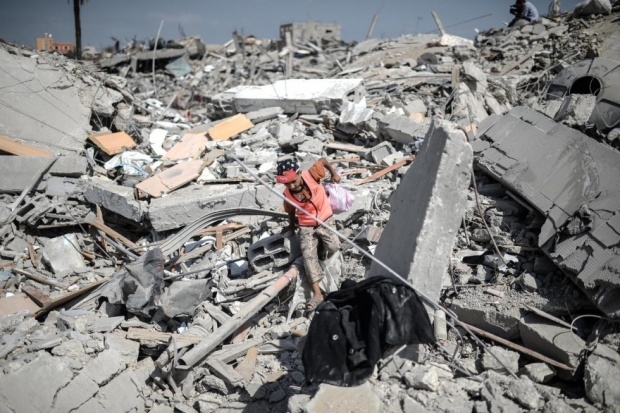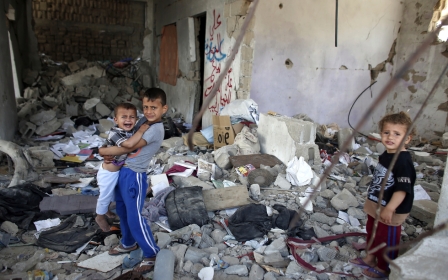UN report warns Gaza may become 'uninhabitable by 2020'

GENEVA - Gaza could become uninhabitable by 2020 if current economic trends and the blockade persist, the UN warned on Tuesday.
"In addition to eight years of economic blockade, in the past six years, Gaza has endured three military operations that have shattered its ability to export and produce for the domestic market, ravaged its already debilitated infrastructure, left no time for reconstruction and economic recovery, and accelerated the de-development of the occupied Palestinian territory, a process by which development is not merely hindered but reversed," United Nations Conference on Trade And Development (UNCTAD)’s report on assistance to Palestinians said.
The report highlighted the severe crises in Gaza related to water and electricity, as well as the destruction of vital infrastructure during the military operations in July and August 2014.
"Gaza’s 1.8 million inhabitants rely on coastal aquifers as their main source of freshwater, yet 95 percent of this water is not safe to drink," the report said.
In addition to the 500,000 people who have been displaced in Gaza as a result of the most recent military operation, the report estimated significant economic losses, including the destruction or severe damage of more than 20,000 Palestinian homes, 148 schools, 15 hospitals and 45 primary health-care centres.
The report said that as many as 247 factories and 300 commercial centres were fully or partially destroyed. Serious damage was inflicted on Gaza’s sole power plant. The agricultural sector alone suffered $550mn in losses.
"In 2014, unemployment in Gaza reached 44 percent, the highest level on record. Joblessness was particularly severe among young women Palestinian refugees in Gaza, with more than eight out of 10 women out of work," the report said.
The economic well-being of Palestinians living in Gaza is worse today than two decades ago. Per-capita GDP has shrunk by 30 percent since 1994, the report noted.
Food insecurity affects 72 percent of households, and the number of Palestinian refugees solely reliant on food distribution from United Nations agencies had increased from 72,000 in 2000 to 868,000 by May 2015, representing half the population of Gaza.
“Even before the three military operations, the economic blockade in place since 2007 had already led to the large-scale cessation of productive operations and loss of employment," the report said.
"Exports from Gaza have been almost completely blocked, imports and transfers of cash severely restricted and the flow of all but the most basic humanitarian goods suspended."
According to the report, discriminatory policies lie behind new recession in the occupied Palestinian territory.
In the first four months of 2015, Israel withheld almost $700mn of Palestinian clearance revenue, which come from taxes on imports into the occupied Palestinian territory, the report said.
Since 1997, Israel has withheld Palestinian clearance revenue on six occasions, for a total period of four years and one month, amounting to $3bn withheld, the report added.
The Gaza Strip has an area of just 362 square kilometres (about 225 square miles) squeezed between Israel, Egypt and the Mediterranean Sea, and is home to some 1.8 million Palestinians, making up one of the highest population densities in the world.
Middle East Eye propose une couverture et une analyse indépendantes et incomparables du Moyen-Orient, de l’Afrique du Nord et d’autres régions du monde. Pour en savoir plus sur la reprise de ce contenu et les frais qui s’appliquent, veuillez remplir ce formulaire [en anglais]. Pour en savoir plus sur MEE, cliquez ici [en anglais].





